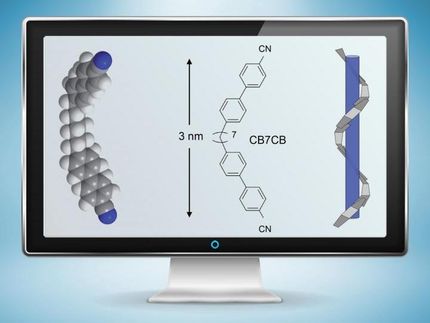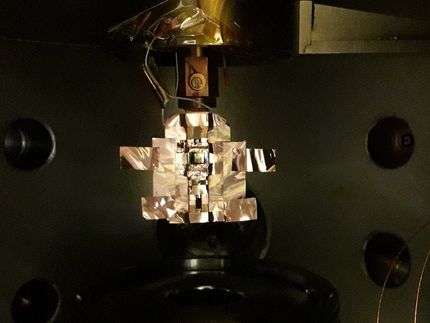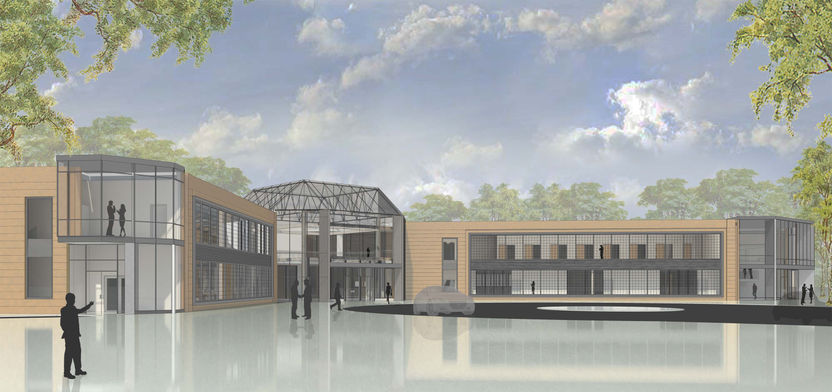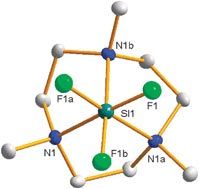Merck Lifts Forecast Following Good Second Quarter
Organic sales growth in all regions
Merck reported a significant increase in sales in the second quarter of 2016 in comparison with the year-earlier period. EBITDA pre exceptionals also rose sharply. Owing to good business performance in the second quarter, Merck lifted its forecast for sales and EBITDA pre exceptionals.
"We again achieved everything we aimed for in the second quarter. That applies to both the Sigma-Aldrich integration and the development of new medicines," said Stefan Oschmann, CEO and Chairman of the Executive Board of Merck. "Strong demand for our products and dynamic market developments gave our Healthcare and Life Science businesses additional tailwinds. Since particularly in Healthcare our performance in the second quarter was so good, we have decided to lift our forecast for the full year."
Net sales of the Merck Group rose in the second quarter of 2016 by 18.2% to € 3.8 billion (Q2 2015: € 3.2 billion). Organic sales growth, which was driven by Life Science and Healthcare, amounted to 5.1%. Acquisition-related sales growth of 19.2% reflects the Sigma-Aldrich transaction, which closed in November 2015. This was amid negative exchange rate effects of -6.1%, which were mainly due to Latin American currencies. In the second quarter, Merck grew organically in all reporting regions. As a result of the Sigma-Aldrich acquisition, North America's share of Group sales increased significantly to 26% (Q2 2015: 20%). Europe and Asia-Pacific, which each accounted for a 31% share of Group sales, were the largest reporting regions.
EBITDA pre exceptionals, the key earnings indicator of the Group, climbed by 28.8% to € 1,158 million (Q2 2015: € 899 million) thanks to the good operating performance of Healthcare and Life Science as well as the Sigma-Aldrich acquisition. The EBITDA margin pre exceptionals roseto 30.4% (Q2 2015: 27.9%). Despite higher exceptionals in the course of the Sigma-Aldrich acquisition, Group EBIT grew by 9.8% to € 550 million (Q2 2015: € 501 million). In the second quarter, Merck's net income of € 312 million was -9.1% lower than in the year-earlier period (Q2 2015: € 343 million). This reflected a sharp increase in the negative financial result stemming mainly from the long-term share-based variable compensation program, whose value increased due to the favorable development of the Merck share price in the second quarter of 2016. Earnings per share pre exceptionals rose in the second quarter of 2016 by 19.2% to € 1.55 (Q2 2015: € 1.30).
Net financial debt, which had increased sharply owing to the Sigma-Aldrich acquisition, decreased slightly to € 12.5 billion as of June 30, 2016 (December 31, 2015: € 12.7 billion) despite dividend payments. Merck had 50,456employees worldwide on June 30, 2016.
Organic growth in the first half
In the first half of 2016, net sales of the Merck Group increased by 19.3% to € 7.5 billion (January-June 2015: € 6.3 billion). This was due to both acquisition effects (+19.5%) and organic sales increases (+4.9%). Exchange rate movements lowered sales by -5.1% in the first half and were primarily attributable to Latin American currencies.
EBITDA pre exceptionals of the Merck Group amounted to € 2.2 billion in the first half of 2016 (January-June 2015: € 1.8 billion). This represented an increase of 27.9% over the first half of 2015. Earnings per share pre exceptionals climbed by 27.2% to € 3.09 in the first half of 2016 (January-June 2015: € 2.43).
Healthcare delivers organic growth in all regions
In the second quarter of 2016, sales by the Healthcare business sector showed strong organic growth of 7.3%, to which all regions contributed. This was canceled out by negative foreign exchange effects of -9.0%. In addition, the return of the rights to Kuvan to BioMarin Pharmaceutical lowered sales by -1.0%. Consequently, Healthcare net sales decreased by -2.7% in the second quarter of 2016 to
€ 1.8 billion (Q2 2015: € 1.8 billion).
Organically, sales of Rebif, which is used to treat relapsing forms of multiple sclerosis, were flat in the second quarter of 2016, despite competitive pressure from oral formulations. Including currency headwinds of -4.2%, Rebif sales amounted to € 441 million (Q2 2015: € 461 million). In the second quarter, Merck generated organic sales growth of 6.8% with the oncology drug Erbitux. Including negative foreign exchange effects of -7.2%, Erbitux sales were stable at € 232 million (Q2 2015: € 233 million). With the fertility treatment Gonal-f, Merck achieved very strong organic sales growth of 23.1%, which was primarily attributable to North America. In this region, Merck benefited from an advantageous competitive situation. Including negative exchange rate effects, sales grew by € 209 million (Q2 2015: € 177 million).
EBITDA pre exceptionals of the Healthcare business sector rose in the second quarter by 16.1% to € 557 million (Q2 2015: € 480 million). This was due not only to good organic performance, but also to a gain of around € 30 million on the sale of a minority interest held by the Merck Venture Fund. Against this background, the EBITDA margin pre exceptionals of Healthcare improved significantly in the second quarter to 31.8% (Q2 2015: 26.6%).
Life Science doubles EBITDA pre exceptionals
The Life Science business sector generated a strong organic sales increase of 8.1% in the second quarter of 2016. Life Science thus achieved the highest organic growth rate of all the Merck business sectors, benefiting from sustained demand for Merck products from the biopharmaceutical industry. In addition to organic growth, the acquisition of Sigma-Aldrich lifted sales by 79.7%. However, exchange rate effects lowered sales by -2.8%. In the second quarter of 2016, sales by the Life Science business sector thus rose overall by 85.0% to € 1.4 billion (Q2 2015: € 773 million).
The Process Solutions business area, which markets products for the entire pharmaceutical production value chain, delivered strong organic sales growth of 13.5%. The Research Solutions business area, which focuses on academia and pharmaceutical research institutions, reported organic sales growth of 3.2%. Applied Solutions, which serves clinical and diagnostic testing laboratories as well as the food and environmental industries, achieved an organic sales increase of 3.9%.
EBITDA pre exceptionals of the Life Science business sector soared by 108.6% to € 417 million in the second quarter (Q2 2015: € 200 million). The EBITDA margin pre exceptionals of Life Science improved to 29.1% (Q2 2015: 25.9 %).
"The doubling of Life Science’s EBITDA pre exceptionals reflects not only our strong organic growth, but also the Sigma-Aldrich acquisition synergies, which we are leveraging with focus and resolve," said Stefan Oschmann. "And we will not let up before we fully realize our synergy objectives for 2018."
Performance Materials maintains profitability in a difficult market environment
In the second quarter, net sales of the Performance Materials business sector declined organically by -4.7%, mainly owing to destocking by display industry customers. In addition, negative exchange rate effects of -2.0% were incurred. The SAFC Hitech business of Sigma-Aldrich, which has been integrated into the Performance Materials business sector, made a positive impact with a 3.1% contribution to sales. Sales by Performance Materials thus declined by -3.5% to € 621 million (Q2 2015: € 643 million).
The Display Materials business unit saw an organic decrease in sales owing to the continued volume declines of mature liquid crystal technologies as well as destocking by customers, a development that will extend into the second half of the year. By contrast, the innovative liquid crystal technology UB-FFS grew further. The Integrated Circuit Materials business unit, which includes the business with materials used to manufacture integrated circuits and the SAFC Hitech business of Sigma-Aldrich, generated solid organic sales growth. The Pigments & Functional Materials business unit delivered very strong organic growth in comparison with a weak year-earlier quarter. Within the Performance Materials business sector, the highest growth rates were achieved by the Advanced Technologies business unit. This was primarily due to the expanding business with OLED materials. A new OLED materials production unit in Darmstadt involving an investment of around € 30 million is to be commissioned in September 2016 to manufacture materials for ultra-modern displays and lighting. Moreover, Merck is planning to construct a new production facility for liquid crystal window modules for around € 15 million; manufacturing is scheduled to begin in 2017. Merck's objective is to expand its market and technology leadership in liquid crystals beyond applications in displays.
In the second quarter, EBITDA pre exceptionals of Performance Materials amounted to € 273 million (Q2 2015: € 295 million). With an EBITDA margin pre exceptionals of 44.1%, the profitability of Performance Materials was the highest among all the business sectors.
Merck lifts forecast
Owing to the good business performance in the second quarter, Merck is lifting its forecast and now expects Group net sales to increase to between € 14.9 billion and € 15.1 billion in 2016 (previous forecast: € 14.8 billion to € 15.0 billion). Organically, Merck predicts net sales to increase moderately in 2016 (previous forecast: slightly). In addition, owing to the acquisition of Sigma-Aldrich, the company continues to expect a portfolio-related net sales increase in the low double-digit percentage range. This will still be countered by negative foreign exchange effects that are forecast to range between –3% and –5% and are mainly due to the currency devaluations in Latin America. Owing to the good business performance, especially in the Healthcare business sector, Merck is also raising its forecast for EBITDA pre exceptionals, which is now expected to range between € 4,250 million and € 4,400 million for 2016 (previous forecast: € 4,100 million to € 4,300 million). Business free cash flow of the Merck Group is expected to be between € 3,140 million and € 3,250 million in 2016.





























































